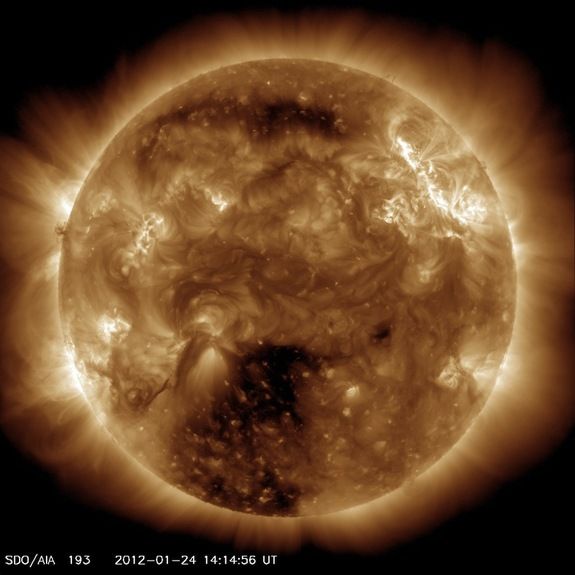NASA Report: Greenhouse Gases, Not Sun, Driving Warming

This article was updated at 10:42 a.m. EST on Feb. 2.
A recent, prolonged lull in the sun's activity did not prevent the Earth from absorbing more solar energy than it let escape back into space, a NASA analysis of the Earth's recent energy budget indicates.
An imbalance like this drives global warming — since more energy is coming in than leaving — and, because it occurred during a period when the sun was emitting comparatively low levels of energy, the imbalance has implications for the cause of global warming.
The results confirm greenhouse gases produced by human activities are the most important driver of global climate change, according to the researchers.
They found that the Earth absorbed 0.58 watts of excess energy per square meter than escaped back into space during the study period from 2005 to 2010, a time when solar activity was low. By comparison, the planet receives 0.25 watts less energy per square meter during a solar minimum, than during a period of maximum activity in the sun's 11-year cycle. (Currently, the sun is in the midst of Solar Cycle 24, with activity expected to ramp up toward solar maximum in 2013.)
"The fact we still see a positive imbalance despite the prolonged solar minimum isn't a surprise given what we've learned about the climate system," lead researcher James Hansen, director of NASA's Goddard Institute for Space Studies, said in a statement. "But it's worth noting, because this provides unequivocal evidence that the sun is not the dominant driver of global warming."
However, in an email to LiveScience, Hansen noted that "the sun is a small but not negligible factor," in determining the size of the imbalance. Over the past decade, the imbalance declined slightly due, in part, to the solar minimum, according to Hansen. [Gallery: Our Amazing Sun]
Sign up for the Live Science daily newsletter now
Get the world’s most fascinating discoveries delivered straight to your inbox.
Solar activity refers to the activity of the sun's magnetic field. Fluctuations in solar activity, including magnetic field-powered sunspots and solar flares, have been linked to past changes in climate, including, controversially, the Little Ice Age. Some skeptics have attributed contemporary climate change to natural fluctuations in solar activity, rather than human-emitted greenhouse gases — the explanation endorsed by nearly all climate scientists, including those convened by the Intergovernmental Panel on Climate Change.
Incoming solar radiation is measured by satellites; the recent minimum set records for the reduction in solar radiation since satellite measurements began in the 1970s.
The study appeared in the journal Atmospheric Chemistry and Physics in December.












